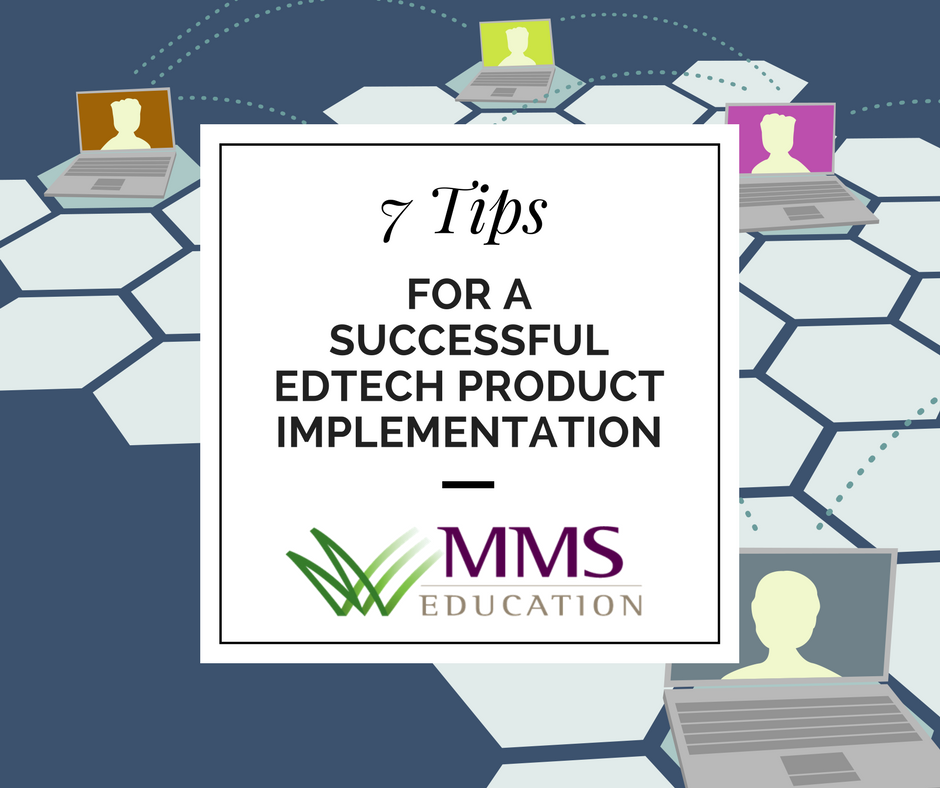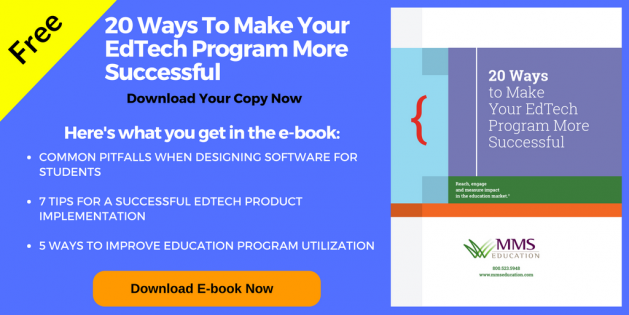 Nowadays, children are growing up with computer-based technology at their fingertips. This technology follows them throughout their day, from school to home.
Nowadays, children are growing up with computer-based technology at their fingertips. This technology follows them throughout their day, from school to home.
We have all seen the benefit and impact of technology in the classroom. The widespread implementation of digital education programs is transforming the way teachers teach and enhancing the way students learn. By embracing helpful software products, schools are fostering the success of their students outside of the curriculum and beyond.
It takes more than a great product to be successful in the education market. It also requires great marketing, sales, execution, support and integration in schools. You have to sell it and they have to use it to keep it!
Here’s how to successfully implement a new education product:
1. Make sure everyone’s on board.
Involving key administrators and faculty in the decision-making process before adopting a new program is extremely important, as well as including them in the implementation planning. Engaging faculty through consultation, collaboration, respect, encouragement, and strong communication will help ensure successful implementation. New technology should never be forced on teachers, so preparing and including them in the process is an important factor when getting started. If they are not included in the process, there is the possibility they may feel the new program doesn’t really fit in with the values of their school or their instructional goals and could just be a fad.
2. Committed leadership.
Whether it’s a principal, superintendent, or school board member, educational leaders need to show their active participation as part of a new product’s implementation. Their support might come in the form of managed release times, training for teachers or through active usage. They need to foster a fertile ground for the new technology. If the higher-ups aren’t committed, then teachers won’t be either.
3. Training.
As you know, educators usually don’t have time to learn a new program on their own. That’s why it’s important to have built-in product training and easy access to training videos. There should also be online product manuals readily available with step-by-step instructions. Ongoing, hands-on training is important throughout the whole year to build confidence and a higher probability of product usage in the classroom.
4. Customer service and tech support.
Make sure teachers have access to helpful support when it comes to the new program. This support should come from those who have experience working with educators, who know how to make the process of adaptation more user-friendly and a bit less scary. It’s even better to have a core team of teachers available who knows the new software inside and out.
5. Providing a comprehensive customer support system that gives administrators and teachers multiple ways to reach a customer service/product representative is essential. For example, most educators want to reach a knowledgeable customer support representative quickly and at the time when they need help, so having a customer service phone number readily available should be top on the list. Likewise, teachers who are unable to make a phone call during class might want to send an email when having an issue. Our recent experience shows that many educators prefer to use a live chat or a widget form on a website. Just make sure you have knowledgeable people on standby who can quickly answer questions professionally.
6. Adapting.
It’s hard to believe, but computer technology can put even greater time demands on educators than traditional methods. This is because technology gives them so many choices when it comes to multimedia-rich approaches. That’s why school districts and educators need to keep up with new technological advances so they can stay on top of new ways to teach. Along with that, teachers need time to learn how to incorporate a new program into their curriculum. If you are working with a school district, starting a new program in only a couple of classrooms or schools might be a great option. That way, you can hit the ground running and then use what you learn from the controlled launch to roll out a successful program district-wide.
7. Get parents involved.
There should be a continuity from school to home. After all, a lot of students have access to computers at home, too. Therefore, parents should be informed of the new software and provided with feedback to keep them involved with their child’s learning. Plus, understanding the new educational program can ease the transition from school to home for the child.
Sometimes, developing a new EdTech product is the easy part. Making sure schools use it and stick with it is often the greater challenge. However, the above tips will help you have a more successful and rewarding experience that lasts.
MMS Education can help! Clients choose MMS Education because of our deep understanding of the education market, backed by nearly 40 years of working with schools, systems, administrators, and agencies.
Most importantly, we embrace your mission and deliver on time and on budget, whether you’re outsourcing one specific project or need a complete turnkey operation.
Call us today at 866-382-6116 or fill out this form to see how MMS Education can help you reach, engage, and measure impact in the PreK-12 education market.

